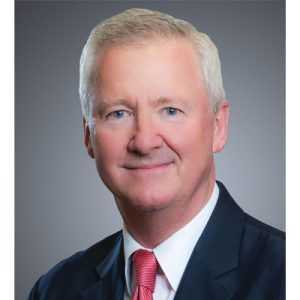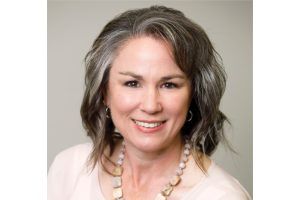Bonds with bounce
Floaters are gaining popularity. Again.
The financial press, economic commentators and social media sites have used a collection of terms this year that convey
a certain image of market values for investment securities: “Plummet,” “Underwater,” “Leaking oil,” and “Nosedive.” I think you get the picture.
Community bankers have come to grips with the notion of their bond portfolios being — ahem — “submerged” in a number of ways. Most of these thoughts and actions are quite logical and, from a safety and soundness perspective, responsible.
Asset/liability risk postures are still suggesting higher net interest margins. Liquidity, in the sense of the availability of short-term assets on demand, is still plentiful. Many banks are prepared for deposit runoff if that ever happens. And then, there is once again the notion that floating rate assets can actually be a salvation from a yield and price stability point of view.
Reward may be returning
This column, in many cases, reflects what your correspondent hears from community bankers at conventions, seminars and old-fashioned discussions. It has been a number of years since adjustable-rate bonds have appeared in this space, mainly because they have had yields or prices almost impossible for investors to like. More recently, using the outbreak of the COVID-19 pandemic as a starting point, portfolio managers were almost forced to buy fixed-rate investments to stabilize their shrinking (“plunging?”) net interest margins. This very column’s headline in December 2020 was “The One Percenters,” and it went through the progression of what it took for an investment to yield 1.0% to maturity. Trust me when I say it was not a money-market equivalent.
Now, as several rate hikes are behind us and more are likely on the way, even the shortest securities are approaching yield respectability. The remainder of this column will discuss several of the more popular options, with the hope that you can find one or more that may be suitable for your own bank’s portfolio. Do we dare to say “buoyant”?
Most adjustable
The most rate-sensitive, and therefore price-stable, investments have these standard features:
- Visible, liquid money-market index
- Short reset periods
- High or no interest rate caps, both periodic and life
- Near-term first reset date
Each of these is built into Small Business Administration (SBA) 7(a) pools. A further sweetener is that SBAs are full faith and credit instruments and 0% risk-weighted. It’s possible to buy these to effectively yield the prime rate minus 2.4%, which is the same as saying fed funds plus 0.6%. That may not sound exciting until one considers that it’s conceivable the net yield could be approaching 3% a few quarters from now. Another enticement is the market values of 7(a)s are remarkably stable. Most pricing models project that they would be down only about 2%, even in a high-rate shock environment.
It must be said that many of these pools can come to market with high premium prices of 10 points or more, which absolutely creates prepayment risk to the investor. There are ways to manage this exposure beyond the scope of this column, which your brokers can explain. Still, it’s safe to say 2022 is built for a bond like an SBA 7(a).
Also in the discussion
Mortgage-backed securities (MBS) come in several different adjustable-rate models. Among the more popular are
collateralized mortgage obligation (CMO) floaters. These have some of the characteristics of an SBA, in that there are no
periodic caps, and they float based on money-market indices, such as the secured overnight financing rate (SOFR). One
comment is that they have very low priority to cash flows, so their prepayments and average lives can fluctuate wildly. Most investors don’t mind, as CMO floaters’ appeal is their quick reaction to rate changes. Be careful of those lifetime caps, however: They could be in the 4.0% range, which means their market values will lose some ground in higher rate scenarios.
Commercial MBS, such as Freddie Mac’s “Ks,” also come in floating rate structures. Their indices are often SOFR, and they also have no periodic caps. Because Freddie Ks are collateralized by multifamily projects, they, too, can see very inconsistent cash flow if some of the larger properties experience prepayments. Again, like CMOs, these usually come to market with little or no premium, so the early payoffs may not hurt the yields. You’ll want to pay attention to the lifetime caps on these as well.
All told, the expected path of monetary policy in 2022 should bode well for money-market alternatives, both for price stability and yield. Bonds that are submerged could be nicely complemented by short-duration instruments. Floaters may just be the answer to restore some levity to your investment portfolio.
SBA preferred service provider
Holtmeyer & Monson has been ICBA’s endorsed SBA lender service provider since 2006. H&M assists community banks
in the underwriting and servicing of SBA loans, and can also provide secondary market assistance. For more information, visit holtandmon.com or call 800-340-7304.
ICBA Securities names new directors
ICBA Securities recently added these leadership bankers to its board of directors: Tommy Bates, Legends Bank, Clarksville, Tenn.; Blake Heid, First Option Bank, Paola, Kan.; Craig Wanichek, Summit Bank, Eugene, Ore.; and Aza Bittinger, Community Bankers Association of Ohio, Columbus, Ohio.
Jim Reber is president and CEO of ICBA Securities, ICBA’s institutional, fixed-income broker-dealer for community banks. He can
be reached at jreber@icbasecurities.com.







